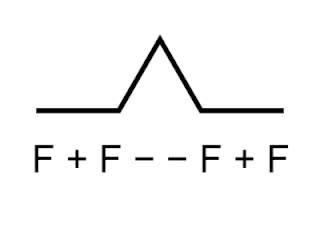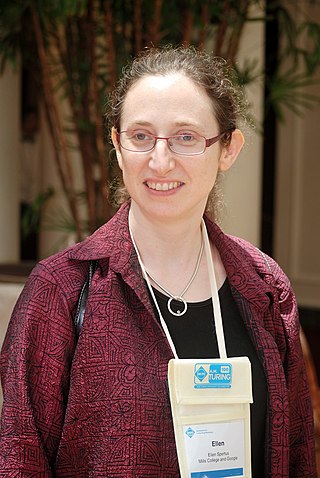
Logo is an educational programming language, designed in 1967 by Wally Feurzeig, Seymour Papert, and Cynthia Solomon. Logo is not an acronym: the name was coined by Feurzeig while he was at Bolt, Beranek and Newman, and derives from the Greek logos, meaning word or thought.
In computing, cross-platform software is computer software that is designed to work in several computing platforms. Some cross-platform software requires a separate build for each platform, but some can be directly run on any platform without special preparation, being written in an interpreted language or compiled to portable bytecode for which the interpreters or run-time packages are common or standard components of all supported platforms.
A software development kit (SDK) is a collection of software development tools in one installable package. They facilitate the creation of applications by having a compiler, debugger and sometimes a software framework. They are normally specific to a hardware platform and operating system combination. To create applications with advanced functionalities such as advertisements, push notifications, etc; most application software developers use specific software development kits.

Harold Abelson is an American mathematician and computer scientist. He is a professor of computer science and engineering in the Department of Electrical Engineering and Computer Science at the Massachusetts Institute of Technology (MIT), a founding director of both Creative Commons and the Free Software Foundation, creator of the MIT App Inventor platform, and co-author of the widely-used textbook Structure and Interpretation of Computer Programs, sometimes also referred to as "the wizard book."

In computing, a visual programming language, also known as diagrammatic programming, graphical programming or block coding, is a programming language that lets users create programs by manipulating program elements graphically rather than by specifying them textually. A VPL allows programming with visual expressions, spatial arrangements of text and graphic symbols, used either as elements of syntax or secondary notation. For example, many VPLs are based on the idea of "boxes and arrows", where boxes or other screen objects are treated as entities, connected by arrows, lines or arcs which represent relations. VPLs are generally the basis of Low-code development platforms.
StarLogo is an agent-based simulation language developed by Mitchel Resnick, Eric Klopfer, and others at the Massachusetts Institute of Technology (MIT) Media Lab and Scheller Teacher Education Program in Massachusetts. It is an extension of the Logo programming language, a dialect of Lisp. Designed for education, StarLogo can be used by students to model or simulate the behavior of decentralized systems.

Ellen R. Spertus is an American computer scientist who is currently the Elinor Kilgore Snyder Professor of computer science at Mills College, Oakland, California, and a former senior research scientist at Google.

Mitchel Resnick is an American computer scientist. He is the LEGO Papert Professor of Learning Research at the Massachusetts Institute of Technology (MIT) Media Lab. As of 2019, Resnick serves as head of the Media Arts and Sciences academic program, which grants master's degrees and Ph.D.s at the MIT Media Lab.

A crash reporter is usually a system software whose function is to identify reporting crash details and to alert when there are crashes, in production or on development / testing environments. Crash reports often include data such as stack traces, type of crash, trends and version of software. These reports help software developers- Web, SAAS, mobile apps and more, to diagnose and fix the underlying problem causing the crashes. Crash reports may contain sensitive information such as passwords, email addresses, and contact information, and so have become objects of interest for researchers in the field of computer security.

Scratch is a high-level, block-based visual programming language and website aimed primarily at children as an educational tool, with a target audience of ages 8 to 16. Users on the site can create projects on the website using a block-like interface. Scratch was conceived and designed through collaborative National Science Foundation grants awarded to Mitchel Resnick and Yasmin Kafai. Scratch is developed by the MIT Media Lab and has been translated into 70+ languages, being used in most parts of the world. Scratch is taught and used in after-school centers, schools, and colleges, as well as other public knowledge institutions. As of 15 February 2023, community statistics on the language's official website show more than 123 million projects shared by over 103 million users, over 804 million total projects ever created, and more than 95 million monthly website visits.

Xamarin is a Microsoft-owned San Francisco-based software company founded in May 2011 by the engineers that created Mono, Xamarin.Android and Xamarin.iOS, which are cross-platform implementations of the Common Language Infrastructure (CLI) and Common Language Specifications.

Mono is a free and open-source .NET Framework-compatible software framework. Originally by Ximian, it was later acquired by Novell, and is now being led by Xamarin, a subsidiary of Microsoft and the .NET Foundation. Mono can be run on many software systems.

OsmAnd is a map and navigation app for Android and iOS. It uses the OpenStreetMap (OSM) map database for its primary displays, but is an independent app not endorsed by the OpenStreetMap Foundation. It is available in both free and paid versions; the latter unlocks the download limit for offline maps and provides access to Wikipedia points of interest (POIs) and their descriptions from within the app. Map data can be stored on the device for offline use. Using the device's GPS capabilities, OsmAnd offers routing, with visual and voice guidance, for car, bike, and pedestrian. All of the main functionalities work both online and offline.

ScratchJr is a visual programming language designed to introduce programming skills to children ages 5–7. The app is considered an introductory programming language. It is available as a free app for iOS, Android and Chromebook.

Blockly is a client-side library for the programming language JavaScript for creating block-based visual programming languages (VPLs) and editors. A project of Google, it is free and open-source software released under the Apache License 2.0. It typically runs in a web browser, and visually resembles the language Scratch.
Eric Klopfer is a professor and director of the Scheller Teacher Education Program and the education arcade at MIT. Klopfer's research explores how educational technology, games, and computer simulations can be tools for teaching complex systems and developing cognitive and computational thinking skills. Klopfer and his research group developed StarLogo and App Inventor for Android and other visual programming language platforms that build on the work of Seymour Papert and constructionism in education. He is also the principal investigator in the research and development of award-winning games designed for building understanding in science and math, connecting game play with scientific practice, problem-solving, and real-world issues.

Catrobat is a block-based visual programming language and Open Source Software non-profit project. First released in 2010 by Wolfgang Slany from the Technical University Graz in Austria. The multidisciplinary team develops the programming language and free apps for teenagers to create their own games, animations, music videos, or all other kinds of apps directly on a smartphone based on the Catrobat framework.

Turtlestitch is a free and open source platform for generating and sharing patterns for embroidery machines. Turtlestitch is derived from educational programming languages such as Logo, Scratch and Snap! using the same jigsaw style programming paradigm which offers simplicity suitable for novices but has powerful features, described as ‘low threshold, high ceiling’ by Seymour Papert. Its microworld is a turtle representing the needle of a programmable embroidery machine. Turtlestitch can be used for creating novel patterns for embroidery, combining the abstract logic of computing and the physical materiality of textiles. Its primary use is educational, as it offers a way of introducing programming to audiences with diverse interests. A growing gallery of open source embroidery designs enables community-based collaboration and shared learning. In 2017, Turtlestitch received the award for the best Open Educational Resource in the German-speaking countries.















